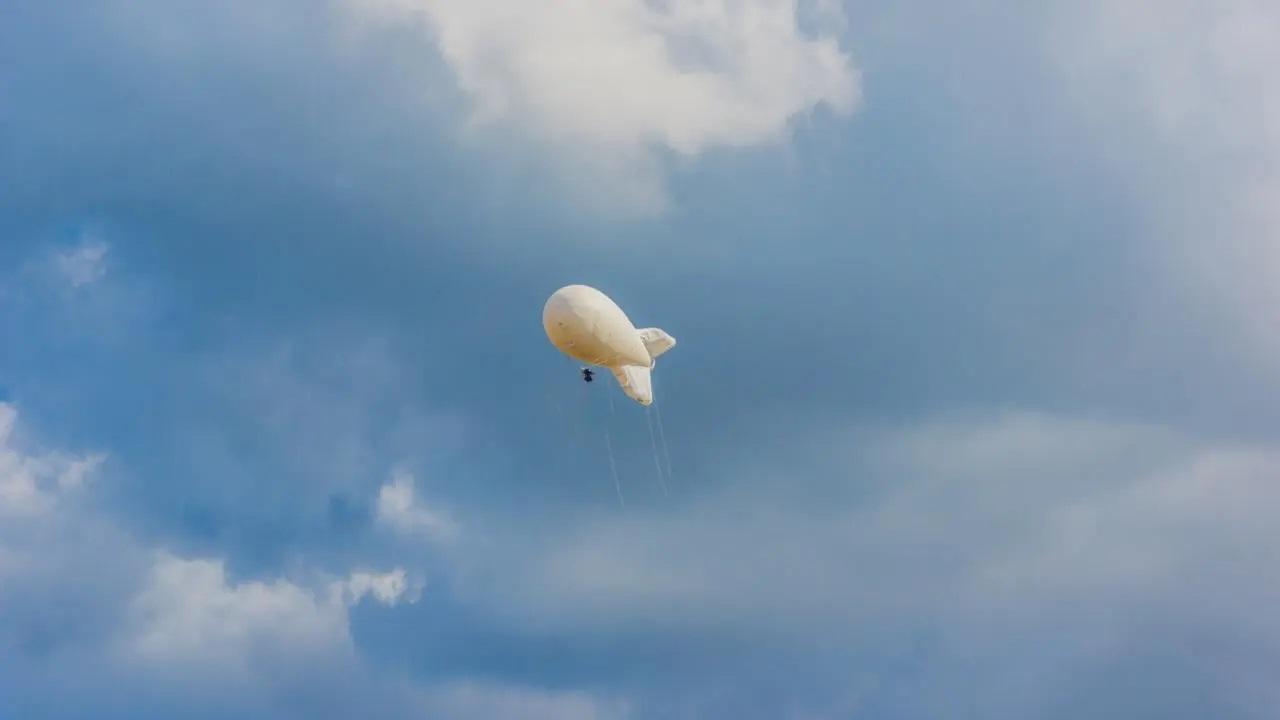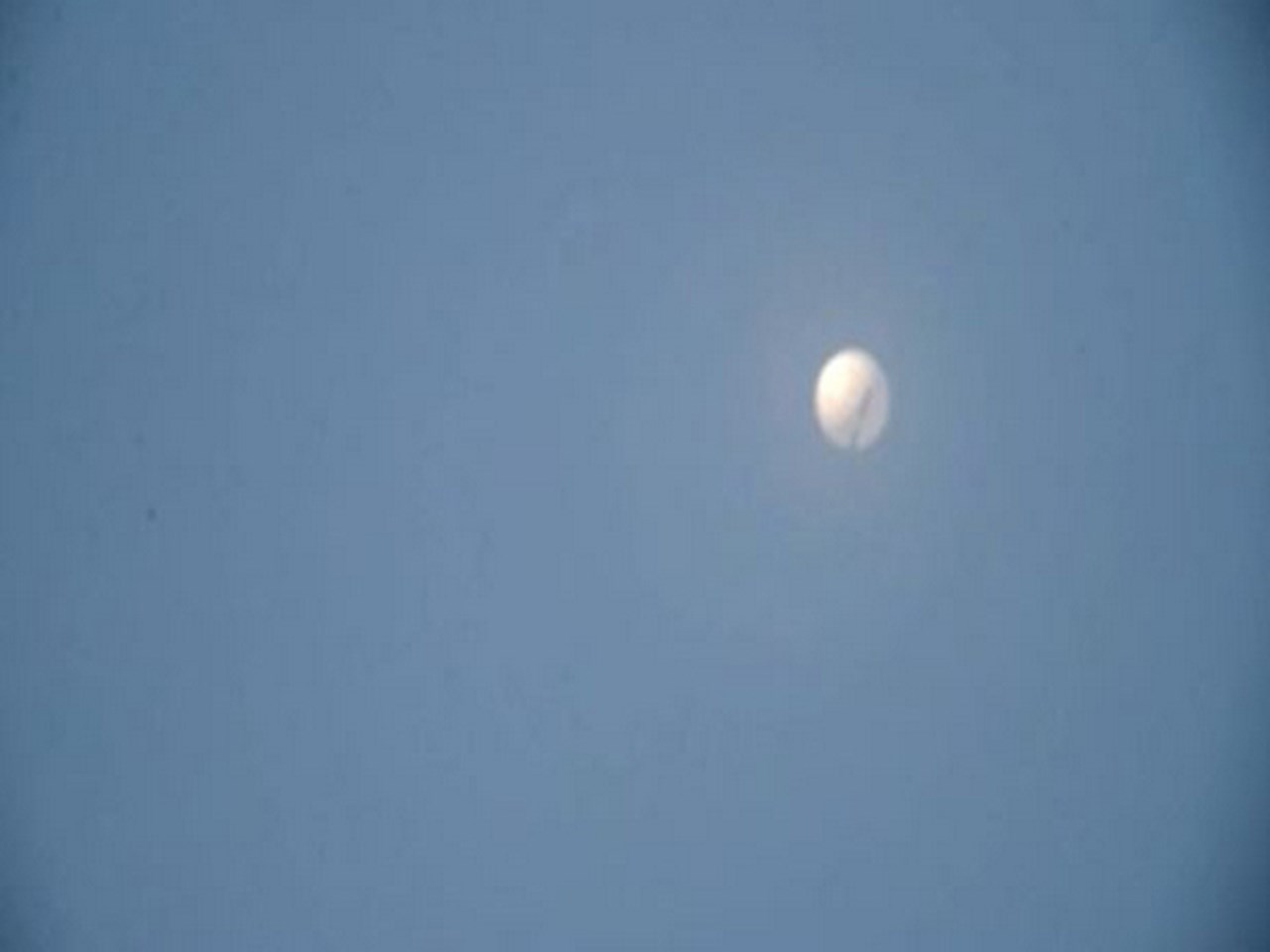India is among the nations that have been targeted by Chinese spy balloons.

Days after the US military shot down a Chinese surveillance craft hovering above vital assets in the country, according to a media report, China used a fleet of surveillance balloons to target many countries, including India and Japan.
The finding of the Chinese surveillance balloon has been disclosed to Indian officials by US officials. was shot down by a fighter aircraft on Saturday in the Atlantic Ocean off the coast of South Carolina, Representatives from nearly 40 embassies were briefed on Monday by Wendy Sherman, the deputy secretary of state.
The report on Tuesday said that “the surveillance balloon program,” which has been in operation for information on military technology over several years, mostly from the region of Hainan off the south coast of China. assets in countries and regions that China is beginning to view as strategically important, including Japan, India, Vietnam, Taiwan, and the Philippines. The Post’s research was founded on conversations with many anonymous defense and intelligence officials. These observation airships are utilized by the PLA (People’s Liberation Army) air force in part, and have reportedly been detected throughout 5 continents, in line with officials, the newspaper stated.
A senior defense official was cited as stating, “These balloons are all a part of a PRC fleet of balloons (made by China) used for surveillance purposes, which also violate the national sovereignty of other nations. In addition to the balloon observed the previous week, at least four others have been spotted. the every day, been observed over Hawaii, Florida, Texas, and Guam in recent years. Three of the four incidents took place under the Trump administration, but the Chinese spy planes were just now found, it said.
Chinese spy balloon: Multiple antennae were utilized by the surveillance device to capture communications.
According to declassified information from the US Department of State, a Chinese surveillance balloon operating at a high altitude had “several antennae” that most likely allowed the balloon to “collect and geolocate communications.
The Chinese military fleet is thought by the US to have participated in similar operations in 40 nations on five continents.
A timeline of the military’s operations and its capacity to prevent the balloon from gathering intelligence was provided to a Senate panel by defense officials during a briefing on Thursday. On Saturday, an F-22 Raptor fighter shot the balloon down above the Atlantic Ocean off the coast of South Carolina.
The newest balloon from China, according to US Secretary of State Antony Blinken, “violated international law and US sovereignty” in “irresponsible conduct” and is being investigated by the US and other global leaders. The balloon incident, according to Nato Secretary General Jens Stoltenberg, “confirms a pattern of Chinese behavior” utilizing “various sorts of intelligence and surveillance platforms” globally.
India has aerostats, but China has surveillance balloons. However, the IAF’s 16-year-old experiment had mixed outcomes.
The performance of the Indian Air Force’s (IAF) two aerostats has been inconsistent. stationed near the western border with Pakistan, sixteen years after they were originally integrated. Because of this, replacing them is now far lower on the priority list. In contrast to the Chinese espionage balloons, which soar at over 60,000 feet, an aerostat is a helium-filled balloon that is tied to the ground but operates at a height of roughly 15,000 feet. While China’s surveillance balloon is making headlines due to allegations that it was also used against India, insiders claim that weather circumstances prevent New Delhi from operating such balloons, which are more of a “nuisance” than useful for gathering crucial intelligence data.
In addition to providing information on how it flies, the Chinese surveillance balloon that fell off the Hawaiian Islands in June last year produced useful information, particularly on the type of technology Beijing is utilizing. According to the story, which cited authorities, some of the balloons are equipped with electro-optical sensors or digital cameras that, depending on their resolution, may take extremely exact photographs. Additionally, they can transmit radio signals and satellite signals.
The aerostat project in India
The IAF had spent more than Rs 300 crore on two aerostats, also known as the Tethered Aerostat Radar System, or TARS, for surveillance in 2007 in response to the Kargil Review Committee’s proposal. According to sources in the defense and security sector, even though the balloon itself was made in America, it contained a significant amount of Israeli technology. Long-range radars, signal intelligence systems, and meteorological equipment are among the things that aerostats are equipped with. Military radars can work over great distances, but by operating high in the air, they can overcome the Earth’s curvature and other surface obstructions.
Depending on the type of equipment on board and the weather, the aerostat can pick up all takeoffs and landings or substantial military operations within a range of 100–600 km. Weather conditions have an impact on aerostat operations. For instance, it has to be lowered if the weather is poor. The effectiveness of the radars is reduced in cloudy or smoggy conditions. The reaction from the aerostats has been uneven, according to a source. According to sources, the IAF initially intended to buy more aerostats but ultimately abandoned the plan since it had fallen considerably lower on the list of priorities.
The insider stated that it was a superior surveillance system when the IAF initially acquired it. The IAF believes that more airborne early warning and control planes are the solution to continuous monitoring (AWACS). “AWACS may be deployed at any time and is not weather-dependent. It may move rather than stay still in one place, according to a second source. According to sources, the IAF periodically upgrades the technology on board the aerostat and is considering using homegrown technologies.
Wind-related disadvantages for India
According to one of the reports, the wind in this area blows from the west to the east, or from Pakistan towards India, making it difficult for India to launch surveillance balloons.
This indicates that whereas Pakistan may use such a balloon, India cannot. In a similar vein, China is not permitted to use surveillance balloons against India unless Pakistan is the operating base.
However, Forbes reports that atmospheric modeling and clever algorithms enable a balloon to change altitude to catch the wind in any desired direction, and even to circle a specific point on the ground, contrary to the Chinese assertions that the wind was what carried their balloon over American territory. The American military has conducted similar balloon trials for years. By 2018, algorithms had made it possible for a balloon to stay inside a 30-mile radius, and they had continued to improve.
According to John Kirby, a spokesperson for the US National Security Council, the Chinese balloon wasn’t just drifting; it also had propellers and steering to give it some degree of control even while it was being carried along by high-altitude jet stream winds.These balloons, which depend on much more than merely wind for navigation, thus incorporate a lot of electronics.
After the US shoots down a suspected spy balloon, China begs restraint.
After the United States claimed to have shot down what it claimed to be a Chinese surveillance balloon, a spokesman for the Chinese Ministry of Foreign Affairs, Mao Ning, encouraged all parties to maintain calm. According to a translation of Mao’s Mandarin statement, “What I want to say on this unanticipated catastrophe is that both parties, notably the U.S., should remain calm.
She was addressing at the first of the ministry’s daily press briefings following the extended postponement of U.S. Secretary of State Antony Blinken’s trip to Beijing due to reports that a possible Chinese spy balloon was flying over the country. Blinken was initially supposed to fly to Beijing on Sunday and Monday, despite the fact that the U.S. had released very little formal information and the Chinese side had never confirmed the trip. The American military fired down the balloon over the weekend.
Before being blown off course, the balloon was reportedly doing meteorological research, according to China, which has referred to it as a “civilian unmanned airship. During a question-and-answer session with reporters on Monday, Mao, a spokeswoman for the foreign ministry, highlighted the accidental nature of the balloon’s flight route and claimed that China had lost control of previous similar vehicles.
Mao refused to provide any information when questioned about the manufacturer or type of business behind the balloon. According to a news release from Senate Democrats, Senate Majority Leader Chuck Schumer “announced that we do know that once the balloon was disclosed to the public, China sought to move the balloon to depart the U.S. as quickly as they could. Mao said that China’s contact with the U.S. “always works hard to manage matters appropriately” when asked to corroborate this information.
She reiterated that the incident was unintentional, but it does challenge the US’s ability to manage crises and maintain US-China ties. Mao reiterated China’s goals for “mutual respect, peaceful coexistence, and win-win cooperation” in the two-way partnership. Plans for Blinken’s travel to Beijing were made public in November, following the first face-to-face meeting between Chinese President Xi Jinping and U.S. President Joe Biden under the Biden administration.
Hopes for more stability in the fragile U.S.-China relationship grew after hearing about the meeting and learning that Blinken will visit Beijing. Ahead of Blinken’s travel, U.S. Department of State spokesman Ned Price told reporters on Thursday that “responsible management” of the world’s “most critical” bilateral relationship was one objective of high-level discussions with Beijing. Such discussions, he continued, are intended to prevent “competition from veering into war.”
edited and proofread by nikita sharma




